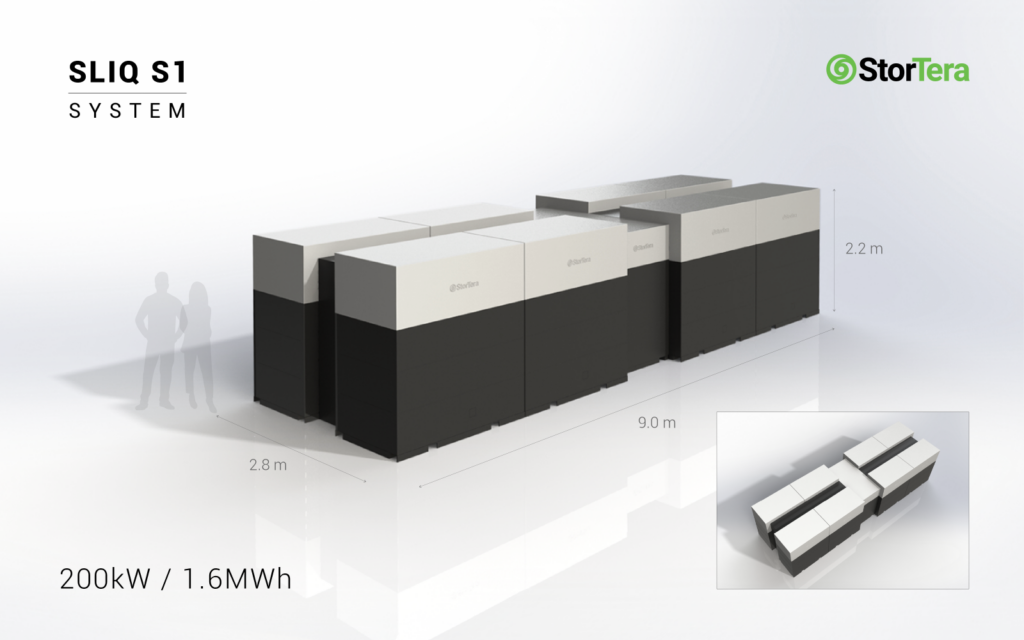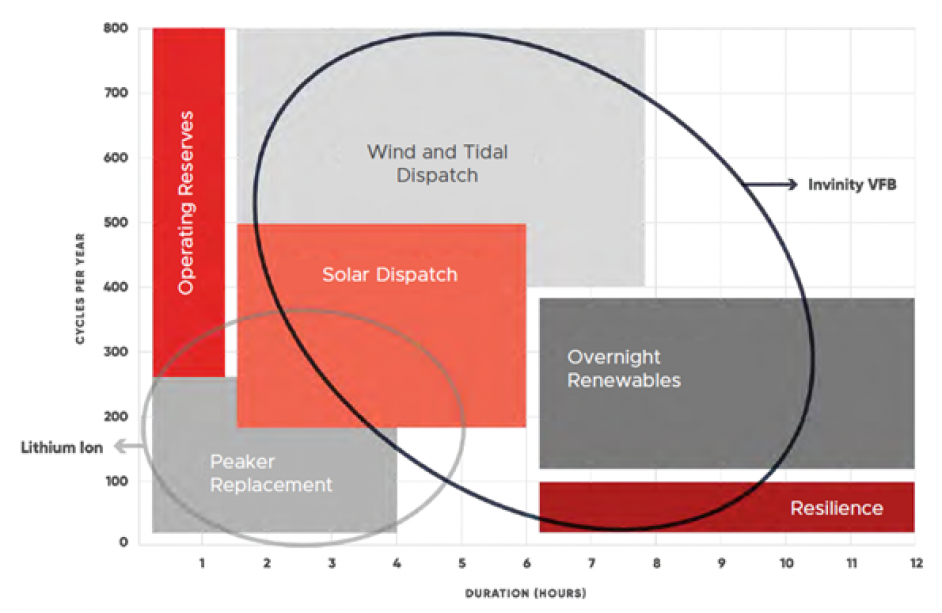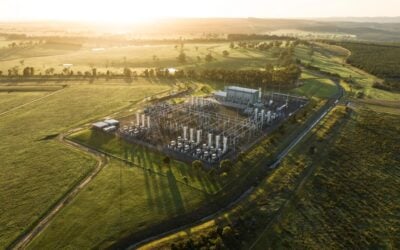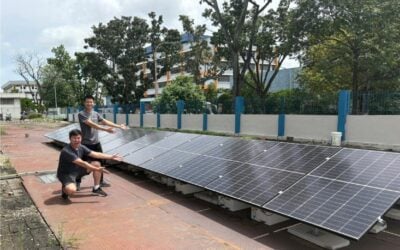
The UK has become an undisputed global leader in energy storage deployments, driven on in the past six years by the growing business case for batteries on the grid.
As of the end March 2022, there were a cumulative 1,700MW of battery storage installations in the country and 446MW of that total was installed during the preceding year, according to figures from our colleagues at Solar Media Market Research.
Enjoy 12 months of exclusive analysis
- Regular insight and analysis of the industry’s biggest developments
- In-depth interviews with the industry’s leading figures
- Annual digital subscription to the PV Tech Power journal
- Discounts on Solar Media’s portfolio of events, in-person and virtual
As noted in a recent feature article for our quarterly journal PV Tech Power (Vol.31), batteries play a number of different key roles in helping to balance the network, from frequency response to the Balancing Mechanism and Capacity Market.
However, the applications they perform are largely heavy on power, not energy delivered.
“They are on standby in case something happens – so the actual utilisation of the batteries in terms of how much energy they charge and discharge in services like dynamic containment is really very low,” Robyn Lucas, chief analytics officer at market intelligence firm Modo Energy said in that article.
Meanwhile, many argue that batteries or storage with duration long enough to cover periods of low solar or wind production will be needed – in other words, more energy than power – if the UK is to achieve decarbonisation and integrate much higher shares of renewable energy on its grid while maintaining reliability and perhaps even arresting the alarming rise of electricity prices.
Power generation firm Drax recently submitted a plan to expand a pumped hydro energy storage (PHES) plant in Scotland, but also said a final investment decision will be contingent on whether or not policies supportive of long-duration energy storage (LDES) are introduced by the UK government.
A recent report by energy research group Aurora highlighted that up to 24GW of LDES, defined as technologies storing four hours or more of energy, could be needed by 2035 to achieve the targeted goal of net zero emissions from the electricity system by that year.
Longer Duration Energy Storage Demonstration programme
One area where the government has pledged its support is for LDES technology innovation: as reported by Energy-Storage.news in February, the first tranches of funding for a number of LDES demonstration, pilot and prototype projects were committed to.
This came through the government Department of Business, Energy and Industrial Strategy (BEIS) and is being called the Longer Duration Energy Storage Demonstration competition.
Our sister site Current± published two blogs in May which took a deep dive look at some of the five demonstration projects and 19 of the earlier stage pre-commercialisation projects which were awarded a share of the initial £7 million (US$8.78 million) awards, part of a total £68 million the government wants to award through its Net Zero Innovation Portfolio (NZIP).
On 4 May’s first instalment, Current± spoke to awardees through Stream One – the five demonstration projects – which were a “membrane free green hydrogen electrolyser, gravity-based energy storage, vanadium redox flow battery, advanced compressed air energy storage (A-CAES) and a bundled solution of pressurised seawater and compressed air”.
One, Ballylumford Power-to-X green hydrogen project in Northern Ireland, will electrolyse hydrogen using local wind energy which would otherwise be curtailed. Hydrogen will be stored in underground salt caverns and the outputted gas will be blended with 30% natural gas, the managing director of B9 Storage, the company behind the project, said.
Another is a 40MWh vanadium redox flow battery (VRFB) project by Anglo-American VRFB company Invinity Energy Systems, with EDF-owned developer Pivot Power.
The pair worked together previously on a lithium-vanadium hybrid project, the world’s biggest of its kind to date, in Oxford, England.
“To be included as one of the leading participants in a programme whose explicit purpose is to underline the important role longer duration energy storage technologies will play in our increasingly low-carbon energy system is a great honour,” Invinity CCO Matt Harper told Current±.
Also featured in that first blog was gravity storage startup Gravitricity, which is looking to scale-up from an initial 250kW demonstrator that it has put into action near its headquarters in Edinburgh, Scotland.
The company builds a storage system which essentially lifts and lowers weights, releasing potential energy as it does so. Its next project is expected to be 4MW to 8MW of storage at a site to be determined.
You can read the full blog with the demonstration funding winners’ interviews here.
Later last month, on 24 May, the site ran interviews and a look at some of the 19 pre-commercial funding winners, which as might be expected sounds like a more exotic list of novel technologies than the demonstration projects, which largely feature tech our readers might already be familiar with.
A lithium sulfur flow battery which maker StorTera claimed could be the most energy dense flow battery design ever, metal hydride in depleted uranium as a storage medium and a copper-zinc battery are among the winners there.
You can read the full blog with prototype funding winners’ interviews here.

That’s the technology on one hand but on the other it was highlighted last week just how far the UK market still has to go in developing the right framework making for longer durations of energy storage economically viable.
Current± reported that one of the biggest investors in the UK market and a developer-owner of projects, Gore Street Energy Storage Fund, said the optimal revenue mix for energy storage in the UK remains grid balancing services.
As such, its investments will still likely be directed towards battery storage assets with a duration of one hour for the time being. Gore Street said the much lower Capex of shorter duration batteries allows for much higher profits, in the absence of significant commercial opportunities for shifting multiple hours of stored energy.
“Long-duration storage is one of the last unsolved challenges of the energy transition,” Matt Allen, CEO and co-founder of Longer Duration Energy Storage Demonstration Programme participant Pivot Power told Current± in one of the May blogs.
“While we already have much of the technology to store renewable energy for short periods of time, storing it across monthly and even yearly intervals will play a fundamental role in creating strong, secure and sustainable power systems. This year could be the turning point where long-duration storage finally receives the support it requires to scale at pace, and we look forward to working with our project partners to deliver vital pilot projects and accelerate the UK’s journey to net zero.”
Additional reporting by Molly Lempriere, UK editor, Solar Media.






